
500系列无铅烙铁咀/无铅烙铁头

产品特点:
● 采用精炼紫铜为主料,导热性能卓越;
● 特殊镀铁工艺,耐腐蚀、抗氧化,超长寿命;
● 极强的浸润性、延展性,易上锡,焊点圆润;
● 科学严密的化学检验,电感均衡,品质稳定;
● 无铅用料,无铅环境制造,确保符合无铅制程要求。
适用于Bakko、Quick203H、Quick206C
各款烙铁头均以优质材料和精湛工艺技术制造,确保其具备超强的耐腐蚀、抗氧化能力以及其良好的导热性;适当的注意烙铁头的清洁保养,不仅能增强烙铁头的使用寿命,还可以把烙铁头的卓越传热性能完全发挥。
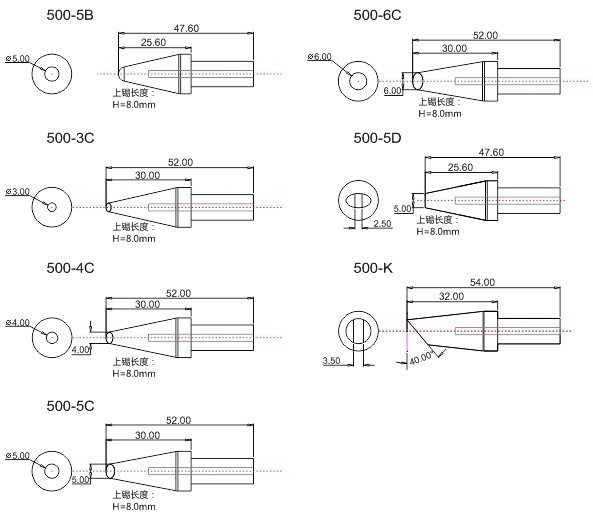
特别说明:
我们竭诚为您提供标准、全面的信息,但不对信息中可能出现的错误或遗漏承担责任。产品图片仅供参考,请以销售实物为准。以上内容如有变动,恕不另行通知。

Yiworld™系列环保烟雾过滤净化系统专门针对焊锡浸锡沾锡、波峰焊回流炉、激光加工、实验室等各种烟雾、粉尘、微粒、气味的过滤净化。本机特点有吸力大、耗电低、过滤效率高、操作简单、移动灵活等特点,产品已被国内外众多企业所采用。
产品特点:
●箱式设计,体积小巧,移动灵活,安装简便,占用空间小
●进口无刷马达,质量稳,寿命长,吸力更强劲,风量大小可调
●三重过滤设计,过滤效率更高,单独更换过滤芯,使用成本更低
●多工位设计,吸烟臂360°自由定型
●方便配合各种生产线、流水线作业
●超静音设计,无噪音污染
适用场合:
Ο烙铁焊锡、锡炉沾锡
Ο波峰焊、回流炉
◎激光焊接、雕刻、打标、切割
◎打磨、抛光、印刷
◎化学实验室
※欢迎来电咨询:186-0769-5075(谢生)※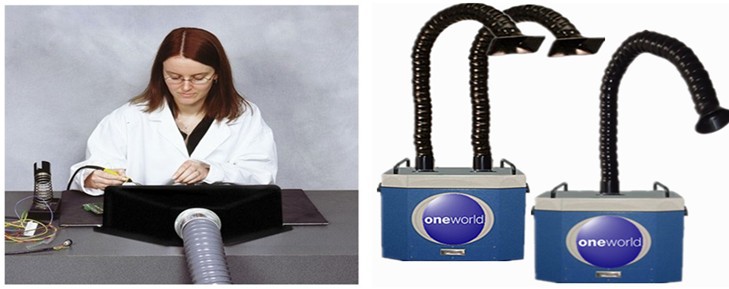
This test distinctly shows the importance of using a fume extraction system, even when soldering only once in a while or for just a few hours a day. The captured particles are primarily condensed residues from flux. Without a filter system these particles ill be partly inhaled the operator with the remainder spread over the work object and workplace. In contrast, a proper filter system will eliminate not only the particles, but will also catch and eliminate dangerous gases created in the soldering process.Industrial lasers can also generate harmful fumes when used on
different types of materials in the manufacturing process. These fumes
are known collectively as Laser Generated Air Contaminants (LGACs).
LGACs fall into two categories: particles and gases
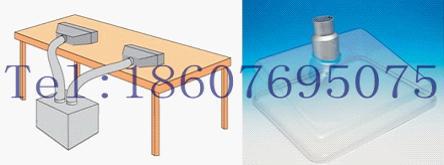
规格型号
F-601
F-602
工位数
1
2
静压力
1000Pa
1000Pa
空载流量
240m3/h
300m3/h
负载流量
200 m3/h
2*120 m3/h
过滤效率
0.3μm 99.97%
0.3μm 99.97%
功率
85W
100W
噪音
<50dB
吸烟臂
1.2m
输入电压
220V AC
外形尺寸(长宽高)
400*240*350mm
400*230*350mm
重量
约7.8kg
约8.5kg
烟尘过滤(净化)原理: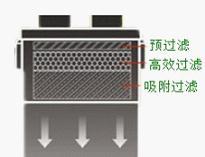
Tel:18607695075谢生
用风机将烟雾抽入机箱,通过内置的滤芯进行过滤,主要能够起到过滤粉尘
、异味、有毒气体和杀灭部分细菌的作用。滤网又分:集尘滤芯、玻纤滤芯、
HEPA滤芯、活性炭滤芯等。其中最关键就是活性炭滤芯,它能起到分解有毒气体
和杀菌作用,特别是抑制二次污染。产品的特点是风机功能以及滤芯的质量决定
净化效果,机器的放置以及室内布局影响净化是否完全,室内净化效果是否均衡
。滤芯需定期更换。
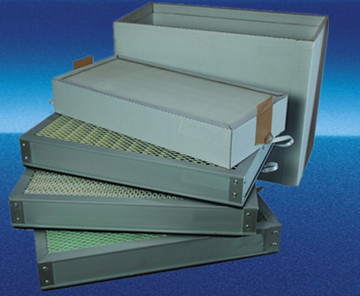
烟雾组成成分及危害:
通常在焊接烟雾中有95%是焊料及助焊剂在高温下挥发出的微粒,这些微粒
飘浮在空气中在一定的光线照射下人眼可以观察到,即我们能够看到的烟雾。而
另外有5%是以气体方式散发在空气中,我们的肉眼是看不到的,而这些气体中
含有大量的一氧化碳、二氧化碳、甲醇、乙醇、甲烷、甲醛等有害性成分。
操作者长时间在以上环境下工作,吸入过量有毒物质,将会引起头痛、恶心、哮
喘、慢性支气管炎等症状,严重影响身体健康,同时也影响正常生产。
Hazardous smoke and fumes, harmful to your health if inhaled, are
present in many workplace environments. Operations using lead-free
solder, lasers, solvents, and glues are especially at risk.
Overexposure can lead to serious – and possibly long term – medical
problems.Health difficulties such as nosebleed, eye irritation, and
sore throat are occurring with increasing frequency in the workplace,
as are incidences of dermatitis, occupational asthma, and, in some
cases, permanent lung damage.
购买烟雾净化器与安装大型管道优劣比较:
亿沃电子--专注环保,关注健康.
TEL:+86(0)186-0769-5075
Email:world208@163.comQQ:19223 61016 FAX:0769-85024569
更多亿沃Yiworld产品:



数字告诉你
买烟雾净化机的理由
15支烟
意大利乔瓦尼医学院证实:在米兰生活一天,吸进的污染空气等于吸15支烟。世
界时尚之都尚且如此污染,其他城市可想而知。
2倍
美国环保局和加拿大卫生署证实:人类68%的疾病是由空气污染引起的。故空气
污染导致的医疗开支比其他疾病加起来还多2倍。
5倍
世界卫生组织(WHO)证实:室内空气污染造成的疾病,超过室外5倍。 (人有
70%-90%的时间是在室内)
11倍
人平均每天呼吸13立方米空气,每立方米1.29公斤重。等于每天“喝”17公斤空
气,比喝水多11倍——宁肯不喝纯净水,也要呼吸纯净气!
20倍
装有净化机的室内或车内,至少比城市空气清洁20倍,在某些污染严重处,甚至超
过100倍——宁肯不买好房子,也要买净化机!
30年
生命科学家判断:如果没有空气污染,全世界人均寿命可以延长30年。所以,宁肯
节食省衣,也要用上净化机!
买亿沃Yiworld烟雾净化机的理由
3用
全球唯一“一机3用”的空气净化机。 将除尘、灭菌、除醛、功能集于一身。人
类第一次有机会轻松地消除烟尘污染。
0.3微米
HEPA除尘器能过滤0.3微米的颗粒物,比人体最小细胞还小数十倍,避免空气中的
微粒尤其是铅、镉等重金属穿透细胞进入血液。
99.9%
6厘米厚活性炭(全球同类烟雾净化器中活性炭含量最多)能瞬间吸附有害气体
,吸附率率高达99.9%,防止感冒、咳嗽、呼吸道感染、肺炎等疾病及“空调病
”。
83%活性碳能过滤装修、家具释放的甲醛。开机2个小时就能过滤掉房间里83%
的甲醛,防止白血病、肝癌等致命疾病,并能消除异味。
OCCUPATIONAL ASTHMA
“Occupational Asthma is a disease characterized by variable air flow
limitation and/or airway hyper-responsiveness due to causes and
conditions attributable to a particular occupational environment and
not to stimuli encountered outside the workplace.” (Bernstein et al
1993)
Fumes and gases in industrial areas are often dangerous to the people
working in those areas. Some of these substances are readily visible
or have a distinct odor; others are invisible and odorless. Many are
toxic and can lead to allergic reactions, sometimes progressing to occupational asthma.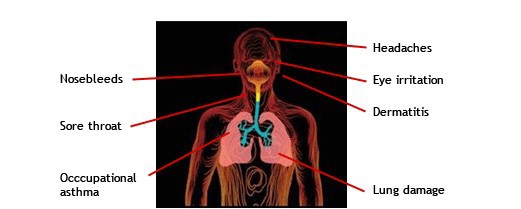
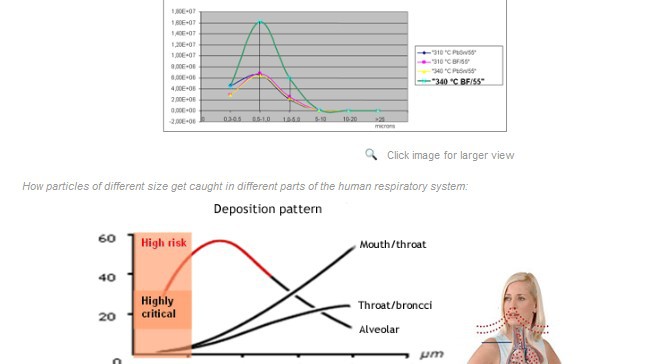
Occupational asthma is a major issue in electronics manufacturing
because when a worker develops occupational asthma, they must be
removed from the working area, sometimes permanently. In some
countries, cases of occupational asthma due to flux fumes and/or
isocyanates have already lead to legal claims against employers.
Occupational asthma is often indicated by symptoms common to hay
fever – an itchy, blocked, or runny nose, often accompanied by
sneezing and glazed, itchy, or watering eyes.
LEAD-FREE SOLDER
The transition to lead-free soldering has reduced strain on the
environment, but for the operator, the hand soldering process has
become more dangerous. The lead in the solder is gone, but to get the
solder wire to flow properly, substantially more flux must be used.
The temperature needed to create a good solder joint using lead-free
solder is also higher, causing a stronger reaction within the flux and
creating more solder smoke with a greater number of particles. Lead-
free soldering produces up to 250 % more particles between 0.5 and 1.0
microns in diameter, the size that is the most dangerous to inhale. In
addition to particles, solder smoke can contain isocyanates,
aldehydes, and other unhealthy substances.
Lead-free soldering causes up to 250 % more particles in the breathing
zone … roughly 20 million particles between 0.3 and 1.0 microns in
diameter per cubic foot, or about 700 million particles per cubic
meter.
How particles of different size get caught in different parts of the
human respiratory system:
Health prob焊锡吸烟仪上海箱式焊接烟雾过滤器
管道锡炉空气净化机
单机激光废气处理装置
工业 烙铁 烟尘吸附机器
工厂 焊台抽烟设备
进口 波峰焊烟雾处理
宁波 国产 回流炉烟雾净化烟雾过滤机烟雾循环净化设备循环烟雾过滤器机器
lems that are related to particles and gases in the electronics
industry:
Nosebleeds
- Early indication, very common in the electronics industry.
Respiratory problems
- Worsening of existing asthmatic conditions
- Occupational Asthma
- Irritation of the eyes and upper respiratory tract
Early symptoms are:
* Watery eyes
* Runny or blocked nose
* Sore throat
* Coughing
* Wheezing or breathing difficulties
AIRBORNE PARTICLE DEMONSTRATION
90 MINUTES OF LEAD-FREE SOLDERING
The following shows exactly what an operator could possibly breathe in
during 90 minutes of lead-free soldering.
Standard lead-free 3% type ROL1 no-clean flux solder wire was melted
continuously with a standard iron. The suction nozzle of a high
efficiency fume extraction system was positioned near the tip of the
iron. Just 90 minutes later, a nozzle-mounted net had captured a
substantial amount of particulates.BEFORE AFTER 90 MINUTES OF
LEAD-FREE SOLDERING
焊锡吸烟仪上海箱式焊接烟雾过滤器
广州管道锡炉空气净化机
中山单机激光废气处理装置
顺德 工业 烙铁 烟尘吸附机器
青岛 工厂 焊台抽烟设备
大连 进口 波峰焊烟雾处理
宁波 国产 回流炉烟雾净化烟雾过滤机烟雾循环净化设备循环烟雾过滤器机器
Back to top
PARTICLES
Respirable particles – Many particulate LGACs are very small
(generally less than 1 micron in diameter), so they can be easily
inhaled.
Toxic particles – Some particulate LGACs may cause allergic,
carcinogenic or toxic effects, such as the chrome and nickel
particles produced when working with lasers on stainless steel.
Back to top
GASES
Volatile Organic Compounds (VOCs) are often produced when working with
lasers on plastics.
Many VOCs already have Workplace Exposure Limits in place according to
COSHH (control of substances hazardous to health).
Back to top
Workers exposed to organic solvents for an extended time period incur
increased risk of the following health issues:
Chronic damage to the nervous system, which can result in
concentration and memory impairment, personality changes, and
permanent tiredness.
Reduced sensitivity to touch
Restless arm/leg syndrome
Skin dryness and irritation; non-allergic eczema
SOLVENT OVERVIEW, TYPES, AND FAQs
Overview
Few workers understand the risks of exposure to solvents, yet many are
exposed to them on a daily basis. Everyone working in an industrial
environment comes into contact with chemicals that contain solvents.
How dangerous the chemicals containing the solvents are depends on the
properties of the substances and the precautions taken when handling
them.
Organic solvents are absorbed primarily through the mucous membranes
(total area: 80-200 m²), but some can also be absorbed through the
skin (total area approximately 2 m²) or digestive system (total area
approximately 10 m²).
There is a noticeable trend of people becoming more sensitive to
allergic materials, such as airborne particles and solvents, in
industrialized societies. This indicates a need for improved
extraction equipment and precautions.
Types
Isocyanates Isocyanates is the name of a large family of substances
such as TDI (toluene-2,4-diisocyanate), MDI (diphenyl-methane
diisocyanate), and HDI (hexa-methylene diisocyanate) used extensively
in industrial workplaces. There are a large number of different
isocyanates with different characteristics, but common to all of them
is that they cause health problems, especially when inhaled. One of
the largest areas of use for isocyanates is in the manufacture of
polyurethane plastics (PUR). PUR appears as a soft compact foam and is
found in coatings and other chemical products. Approximately 5 % of
all plastics used are currently PUR and its usage is increasing.
However, during the polymerizing and heating of PUR, a number of
isocyanate combinations are formed. When heating phenyl formaldehyde
resin, methyl isocyanates are formed.
Isocyanates can easily be absorbed through the skin and through the
mucous membranes. In contact with water they form amines that will
stay in the blood for a long time. Isocyanates are also found in
polyurethane materials (coatings), glues, and varnishes.
Isocyanates cause health hazards – especially when inhaled in the
form of gas, steam, dust, or aerosol droplets. Inhalation can cause
irritation in eyes, mucous membranes, and respiratory system with
symptoms resembling asthma or bronchitis and decreased lung function.
The risk of hypersensitivity is high.
Isocyanates can also cause skin irritation. Repeated contact can cause
eczema, and in some cases, skin allergy. Isocyanates have a very low
limit value … so low that you may be exposed to dangerous
concentrations without noticing, as isocyanates are invisible and
odorless at low levels. An allergic person can develop problems even
when exposed to concentrations below the hygienic limit value.
Recently, new health hazards have been discovered with certain PUR
coatings and some PUR glues used in the manufacture and repair of
printed circuit boards. The same risks occur when working with coated
optical cables that contain small amounts of PUR and coated wire. When
these materials are heated, isocyanates are formed in such high
concentrates that it can cause asthma. It is believed that the thermal
segregation starts at 150-200°C. There are also strong reasons to
suspect that isocyanates can be formed when heating resin products
like fluxing materials.
Alcohols Inhalation or skin contact with alcohols such as methanol,
ethanol, or isopropanol can cause dizziness, headache, disturbed
vision, or fainting. Absorption over a longer period can permanently
damage the eyesight of the victim.
焊锡吸烟仪上海箱式焊接烟雾过滤器
广州管道锡炉空气净化机
中山单机激光废气处理装置
顺德 工业 烙铁 烟尘吸附机器
青岛 工厂 焊台抽烟设备
大连 进口 波峰焊烟雾处理
宁波 国产 回流炉烟雾净化烟雾过滤机烟雾循环净化设备循环烟雾过滤器机器
Aldehydes Aldehyde solvents such as formaldehyde and acetaldehyde are
transformed when heat is applied to them, resulting in fumes that have
an irritating effect on the eyes and respiratory organs. Inhalation
can induce headache, dizziness, and fainting in severe cases.
Esters (acetates) Esters such as ethyl acetate and dioctyl phthalate
are often used as solvents and dissolvents in the manufacture of
paints, plastics, and synthetic fibers. Like most solvents, they cause
irritation of the respiratory passages, but long term exposure causes
kidney and liver damage.
There are many other solvents in common use, including ketones,
mercaptans, organic acids, and ethers, all of which have an effect on
the human body, primarily on the respiratory system. Skin contact
(splashes) resulting in eczema is a secondary, but fairly common
occurrence.
FAQs
Why are solvents dangerous?
Can the body break down solvents?
Are all solvents equally dangerous?
What parts of the body do solvents harm?
Is the damage done by solvents permanent?
Q:Why are solvents dangerous?
A: Solvents dissolve fat. The easier they dissolve fat, the easier
they are absorbed by the body and the greater their capacity for doing
damage. The ability to dissolve fat is partly the reason why solvents
are used, and is one of the main reasons why they are so dangerous if
they get into your body.
The cells of the brain contain a high degree of fat. Since the brain
works like a sponge in absorbing solvents, this puts the nervous
system at great risk.
Q:Can the body break down solvents?
A:Yes, the liver can break down many of the solvents. But
unfortunately, the chemicals formed when these substances are broken
down can be even more dangerous than the original solvents.
It can take a long time for your body to break down solvents – so
long, in fact, that the body cannot get rid of everything during the
night or even over the weekend. This is very serious because it means
that solvents can accumulate in your body, sometimes causing
irreversible damage.
Q:Are all solvents equally dangerous?
A: No, some are safer than others. Also, the body absorbs some more
slowly than others. If you have a choice of solvents, use one that
causes as little harm as possible and is absorbed very slowly.
Q:What parts of the body do solvents harm?
A:That depends on the solvent in question. The brain, bone marrow,
liver, and kidneys are susceptible to damage, but the most common
effect is damage to the nervous system. Just as with alcohol (which is
a solvent) as the body absorbs more and more of a solvent, reactions
become slower and judgment is impaired. In many jobs, those events can
open the victim to other, even more extreme dangers.
Q: Is the damage done by solvents permanent?
A: Unfortunately, in many cases the damage is irreversible. It has
been proven that occupational symptoms appear slowly over a long
period. By the time a condition is diagnosed, lasting damage may have
been caused to the nervous system, respiratory system, eyes, brain,
liver, and kidneys.
GLUES
The main health risks of long-term exposure to glues are:
- Skin irritation
- Skin drying
- Allergic contact eczema
- Asthmatic problems from inhalation of glue dusts and solvents
The level of health risk varies depending on the type of glue being
used, with non-hardening glues (“hot glues” that gain strength by
cooling) being least dangerous. Glues that strengthen by drying are
somewhat more harmful, with water?based glues being less dangerous
than solvent?based types. Glues that pose the highest risk of health
concerns are “hardening” glues that cure independent of surrounding
conditions.
HARDENING GLUES – HEALTH CONCERNS
Polyurethane glues – Polyurethane glues contain isocyanates that are
released during application. Isocyanates can cause:
Asthma
Hyper-sensitivity to isocyanates
Breathing problems when exposed to other fumes (perfumes, motor
vehicle exhaust, tobacco smoke, etc.)
Irritation of skin and eyes
Reduced
can cause poisoning through contact, ingestion, or f




